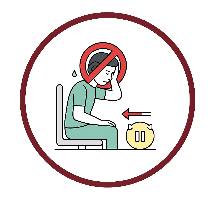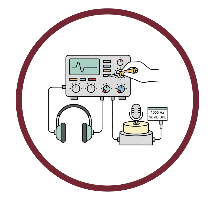Speech Audiometry Test
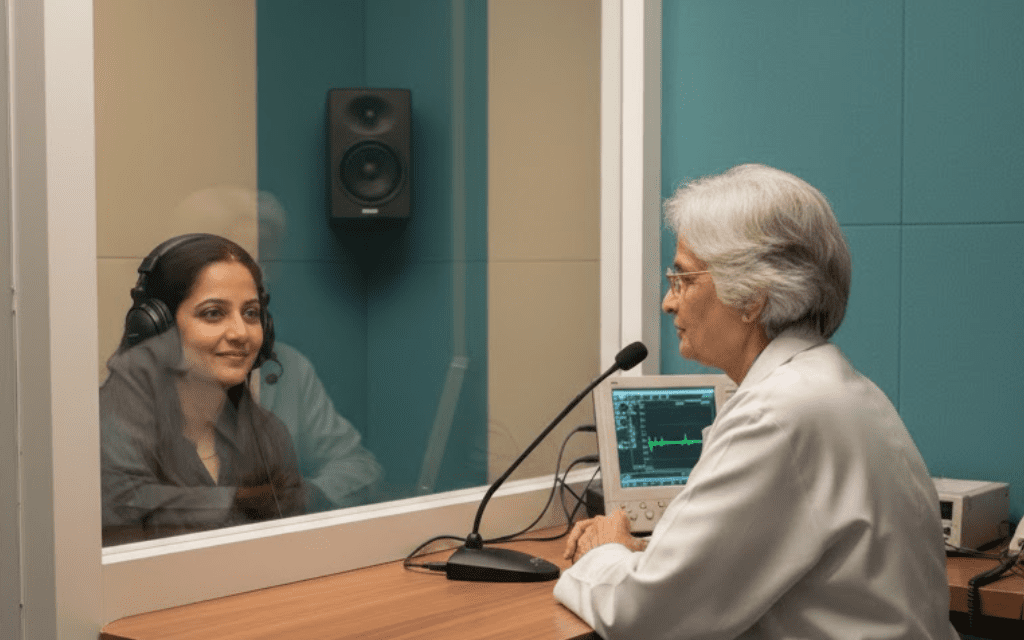
What is a Speech Audiometry Test?
A Speech Audiometry test is performed to check how well you detect and understand spoken speech words. Unlike tone audiometry, it focuses on clarity: how clearly speech comes through at different loudness levels. You’ll wear a headset connected to a calibrated speech audiometer while an audiologist plays recorded or live voice lists. Responses are scored and turned into actionable speech audiometry test results that guide the treatment and hearing-aid programming.
Why Perform Speech Audiometry?
A speech audiometry evaluation goes beyond pure-tone testing, showing how clearly you can understand spoken words. People often say, “I can hear, but I can’t understand.” This test directly addresses that issue by measuring recognition, clarity, and processing of speech.
Reasons to perform speech audiometry include:
- Difficulty following conversations in quiet or noisy settings
- Persistent clarity issues, even with normal tone thresholds
- Fine-tuning the hearing aid performance
- Comparing clarity across both ears for medical diagnosis
In short, audiologists perform speech audiometry to link hearing thresholds with real-world communication ability, giving a practical picture of how well you process speech.
Speech Audiometry Procedure: Step-by-Step Overview
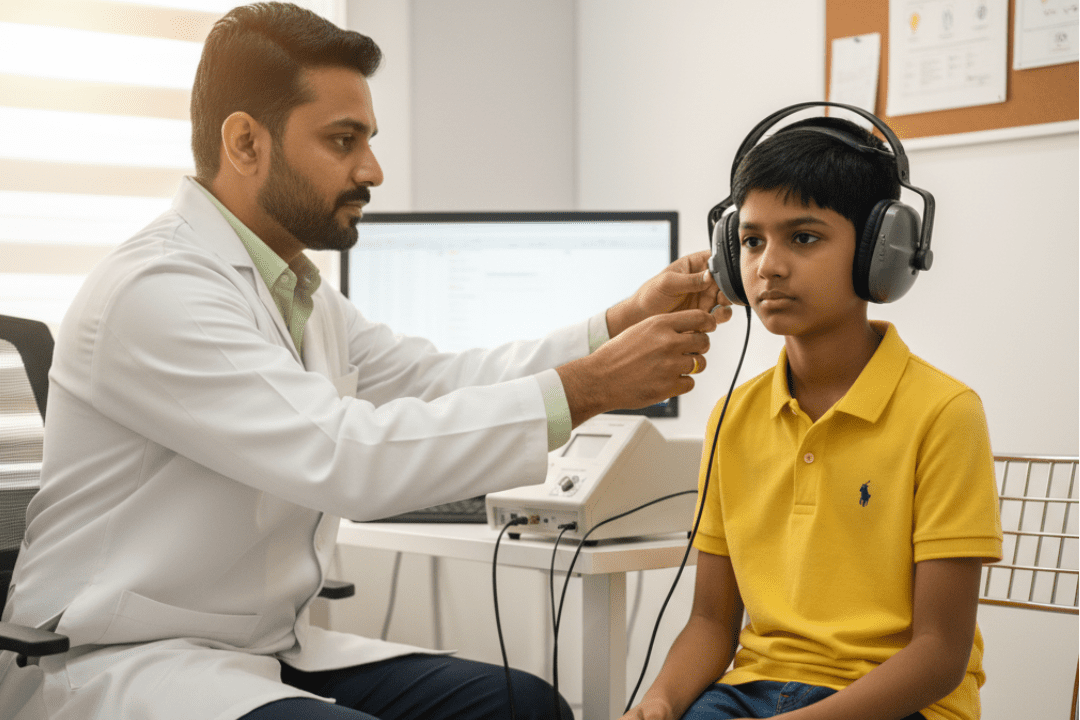
Step 1
Headphone placement
Calibrated headphones (or insert earphones) are fitted. A quick check ensures comfort and a proper fitting so your speech audiometry results are reliable.
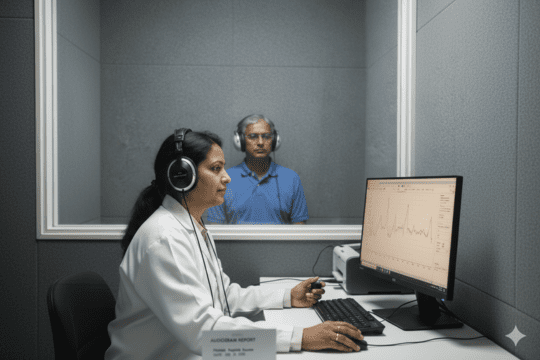
Step 2
Speech recognition threshold test / Speech reception threshold
Soft spondee words (two-syllable words with equal stress) are presented to find the lowest level at which you can repeat at least half correctly. This step establishes the speech recognition threshold test, also called the speech reception threshold (SRT), which helps set loudness for the next tasks.

Step 3
Speech discrimination testing
You hear phonetically balanced word lists at a comfortable loudness. Your speech discrimination score (word-recognition percentage) reflects how clearly you understand speech. This is the heart of the speech audiometry procedure.

Step 4
Results analysis
Scores and levels are summarized on a speech audiometry graph and integrated with pure-tone thresholds. The combined picture guides counseling, protection, or amplification. This structured speech test procedure keeps the assessment consistent from start to finish.
Understanding the Speech Audiogram and Graph
The chart that shows how well you did on a speech test is called a speech audiogram. It translates scores like the speech reception threshold and speech discrimination score into a visual display. The speech audiometry graph shows how one’s understanding changes with volume, giving a clear picture of how clear speech is at different levels of loudness.
It’s important to know how to read the speech audiogram and graph because:
- It connects tone-test results with speech clarity.
- It detects if problems are caused by sound quality, clarity, or both.
- It shows patterns, like the roll-over effect, that suggest there are problems with the retrocochlear area.
Patients and audiologists can easily keep track of changes, set goals, and plan the best ways to help by understanding the speech audiogram and graph.
Factors to Consider When Conducting Speech Audiometry
Several variables can influence the accuracy of a speech audiometry test. Audiologists must control these to get reliable results.
Key factors to consider when conducting speech audiometry:
These factors to consider when conducting speech audiometry help reduce variability, ensuring that speech audiometry results truly reflect daily listening ability.
Book Your Speech and Hearing Test Today
Don’t Miss What Matters – Understand Speech Clearly Again
Our team will map your speech audiometry findings to practical communication tips, device options, and follow-up care. Whether you need baseline screening or fine-tuning, this speech hearing test gives you clarity you can use immediately.
FAQs
What are the benefits of speech audiometry?
It shows how you understand real words, not just tones. The speech audiometry test helps explain “I hear you but can’t make out the words,” guides accurate hearing-aid fitting, and tracks changes over time. Because results are plotted on a speech audiometry graph, progress is easy to see.
What is the normal range of speech audiometry?
Most adults with normal hearing have an SRT around 20–25 dBHL and a high speech discrimination score, often 90–100%, when words are presented at a comfortable level. Your speech audiometry results will note both figures and how they relate to your pure tone audiometry test.
What is a good audiometry score?
In speech discrimination testing, 80–100% is generally considered good; 60–79% suggests reduced clarity; below that, conversation may feel effortful even when sounds are loud. Your audiologist will relate these numbers to daily listening goals.
What is open set and closed set in speech audiometry?
Open set lists require repeating words without prompts, mirroring real life. Closed set provides options to choose from – useful for children, new learners of the test language, or anyone who needs added support during the speech test procedure.
What is the roll-over phenomenon in speech audiometry?
“Roll over” occurs when word recognition declines as loudness increases. On the speech audiometry graph, the curve rises, peaks, and then drops. This pattern can point to retrocochlear involvement and may prompt further medical evaluation.




